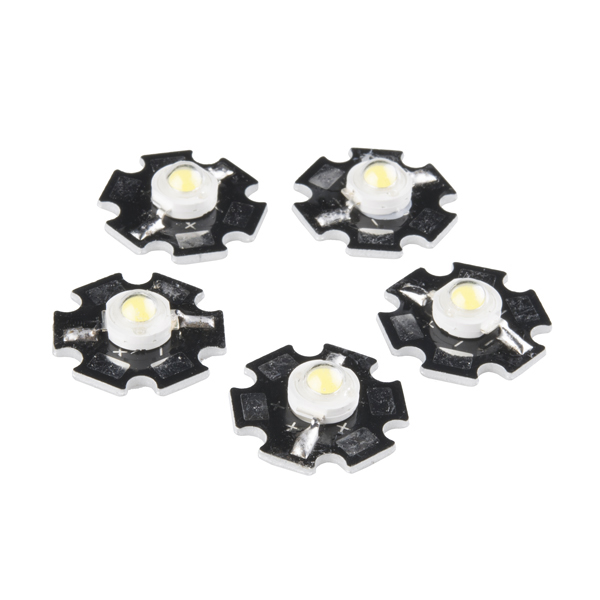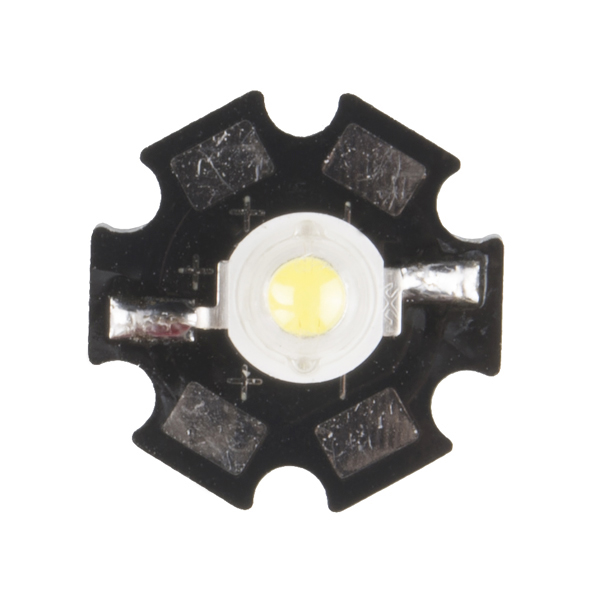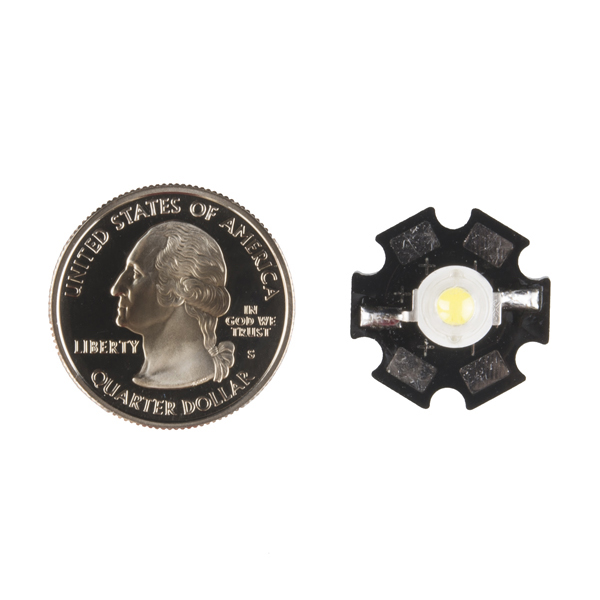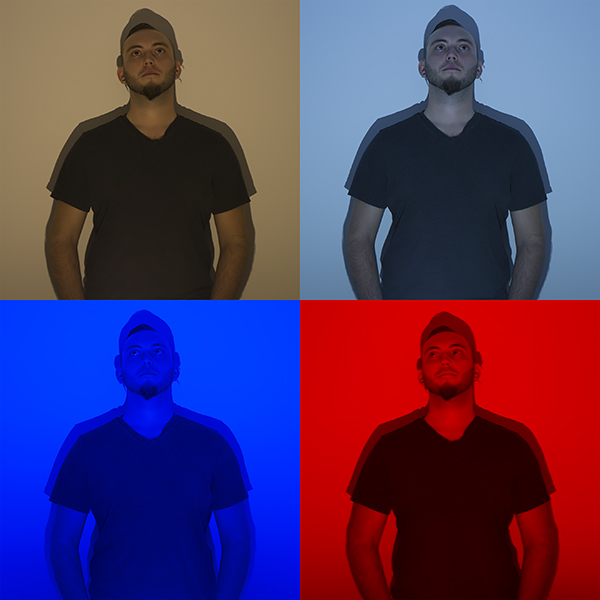LED - 3W Aluminum PCB (5 Pack, Cool White)
So much power and light from such a small package. This 5 pack of "Cool" white 3 Watt aluminum backed PCBs is sure to shed a lot of light on any project you add it to. These LEDs act as any other LED except these little guys require much more power while delivering a light as intense of a thousand suns going super nova (this is an exaggeration but you know what we mean)!
Each LED in the pack sits upon an aluminum backed PCB to help with heat dissipation and emits a cool white light. Additionally, each LED requires a forward voltage of 3.2-3.8V at 750mA.
Note: We like to joke around about super novas and all, but seriously, don't look directly into the LED.
- Forward Voltage: 3.2-3.8V
- Forward Current: 750mA
- Viewing angle: 125±5 Degrees
- Luminous Intensity: 160-240LM
- Temperature Color: 6000-7000K
- Datasheet
- Product Video
- Related Hookup Guides:
LED - 3W Aluminum PCB (5 Pack, Cool White) Product Help and Resources
Touch Potentiometer Hookup Guide
October 22, 2015
Learn how to use the SparkFun Touch Potentiometer to control lighting, volume or other inputs in your daily life.
PicoBuck Hookup Guide v12
February 18, 2016
The PicoBuck board is a high-efficiency three-channel constant-current LED driver.
FemtoBuck Constant Current LED Driver Hookup Guide v13
December 10, 2015
The FemtoBuck board is a high-efficiency, single-channel constant-current LED driver.
Core Skill: Soldering
This skill defines how difficult the soldering is on a particular product. It might be a couple simple solder joints, or require special reflow tools.
Skill Level: Competent - You will encounter surface mount components and basic SMD soldering techniques are required.
See all skill levels
Core Skill: Electrical Prototyping
If it requires power, you need to know how much, what all the pins do, and how to hook it up. You may need to reference datasheets, schematics, and know the ins and outs of electronics.
Skill Level: Rookie - You may be required to know a bit more about the component, such as orientation, or how to hook it up, in addition to power requirements. You will need to understand polarized components.
See all skill levels
Comments
Looking for answers to technical questions?
We welcome your comments and suggestions below. However, if you are looking for solutions to technical questions please see our Technical Assistance page.
Customer Reviews
4.5 out of 5
Based on 4 ratings:
Fair to Good Quality for the price
Used 3 of them so far, very bright, looks to be well made construction will have to wait to check for longevity. Good for Experimentation and such for the price. Would like to make a large light panel for above a workbench doing high detail work, to see if it would be economical to run compared to other light sources.
Great step up from standard LED's
I wanted some LED's with more power than your standard LED and these were great. Easy to solder to and no polarity confusion thanks to the printing on the PCB. Very bright (uncomfortable to look at directly) but I already planned to use a diffuser. These can be a little more difficult to incorporate into the aesthetic of your project than other form factors but if you need the extra brightness, this is a great way to get it.
holy crap that's bright!
The only problem I have working with these LEDs is that when they are on fully powered they are blindingly bright. Seriously. Spots left in your vision for several minutes. Be careful. The description isn't kidding.
The aluminum base is clearly necessary as a heat sink. I haven't tried running one at full power for more than a few seconds, but the heat sink gets warm when I do.
Great Microscope Replacement Light
Omax Microscopes use the same LED. If you feed the wrong voltage to the microscope by plugging in the wrong power supply, the light unit burns out (how my wife did this twice in a row, I am not sure). A quick bit of solder and thermal paste and everything is up and running again.







Do these need heatsinks?
Are the specs (amps, lumens) for a single LED or all 5 together? It seems like a heart-sink is necessary; what's the SparkFun P/N for that?
how can I power this LED if the picobuck only allows for 660mA ?
You guys should carry more high-power LEDs. I really don't enjoy risking it & buying stuff from Ebay. I would love to buy from you guys b/c I trust you and you have excellent shipping costs due to USPS options :)
Just received an email from Sparkfun--about a week too late. I bought 20 of these at twice the price. Aux/driving lights on my motorcycle using 10 degree lens. Stylemonkey--regarding lens, I use this: 1WS-LM10. Four leds in series with a .47 ohm, 1/4watt resistor.
Wavelength looks a little off. 6000nm is ultra-far infrared. I think perhaps you mean color temperature. Wavelength should be 400-700nm. Though, white is a blend of many wavelengths, so this still doesn't work too well.
Is the example picture with one LED or all five?
Does anyone have any recommendations for lenses to use with these LEDs?